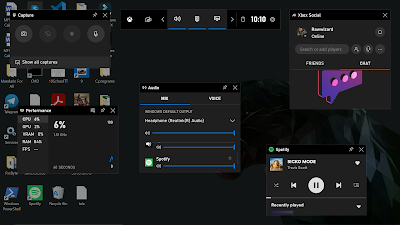Computer Terminologies
7 Computer Terminologies you must know.
1)Firewall: A firewall is a piece of computer software or hardware that restricts the data that is allowed to flow through. Firewalls block traffic that is undesirable in some way, the intention being to prevent infection by malware and so on without restricting the user from carrying out the legitimate activity.
2)Cookie: A small text file sent to your computer by a web site you have visited. These can be very useful in that they can allow the website to recognize who you are when you return. Cookies cannot store viruses or other threats, although they can be used to track your activity across different web sites in order to provide, for example, “targeted” advertisements.
3)Bits, Bytes: At a basic level, all computer data is just a series of 0s and 1s. Each of these is referred to as a “binary digit”, for which “bit” is just an abbreviation. A byte is (generally) a collection of eight bits, so-called because of the pun with bit and bite.
1 kilobyte = 1024 (or 1000) bytes.
1 megabayte = 1024 (or 1000) kilobytes.
1 gigabyte = 1024 (or 1000) megabytes.
1 terabyte = 1024 (or 1000) gigabytes.
1 petabyte = 1024 (or 1000) terabytes.
1 megabayte = 1024 (or 1000) kilobytes.
1 gigabyte = 1024 (or 1000) megabytes.
1 terabyte = 1024 (or 1000) gigabytes.
1 petabyte = 1024 (or 1000) terabytes.
4)Modem: A modulator-demodulator, or simply a modem, is a hardware device that converts data from a digital format to an analog format, intended for communication directly between devices with specialized wiring, into one suitable for a transmission medium such as telephone lines or radio.
5)Edge Computing: Edge computing is a networking philosophy focused on bringing computing as close to the source of data as possible in order to reduce latency and bandwidth use. In simpler terms, edge computing means running fewer processes in the cloud and moving those processes to local places, such as on a user’s computer, or an edge server. Bringing computation to the network’s edge minimizes the amount of long-distance communication that has to happen between a client and server.
7)Captcha: A captcha is a program used to verify that a human, rather than a computer, is entering data. Captchas are commonly seen at the end of online forms and ask the user to enter the text from a distorted image. The text in the image may be wavy, have lines through it, or may be highly irregular, making it nearly impossible for an automated program to recognize it










I love your content 👌🏻
ReplyDeleteThankyou😊
DeleteYour content is amazing
ReplyDeleteDoing great! Keep it up👍
ReplyDeleteHey that's really great😍
ReplyDelete